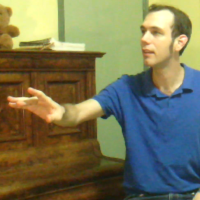I saw the most awesome documentary last week about healers all over the world. Within 2 minutes, I had tears leaking out because of what a good story a healing makes. Before, broken and hurting and helpless to do anything about it; afterwards, healed and whole and grateful to God. The best part is that the story is true.
This post – and my free ebook you can download below – is for the life writers of true stories who want some “back to basics” reminders for how to get your story on paper. Whether you’re writing memoir, autobiography, or biography, a few simple principles hold true. And most of them are fairly easy to spot in your own writing, so you can save a lot of time by referring back to these principles as you write.
Memoirs and biographies need to feel real for the reader. They need real drama.
Yes, it’s your story, but it’s still a story. Your story – or the story of the person whose life you’re chronicling – has already captured your attention and imagination and heart. It needs to be written in a way that also captures the reader’s attention and their heart.
Here’s my 8 basic tips – one for every day of the week, plus an extra.








 In March, Sting gave a TED talk called ‘How I started writing songs again’ (
In March, Sting gave a TED talk called ‘How I started writing songs again’ (